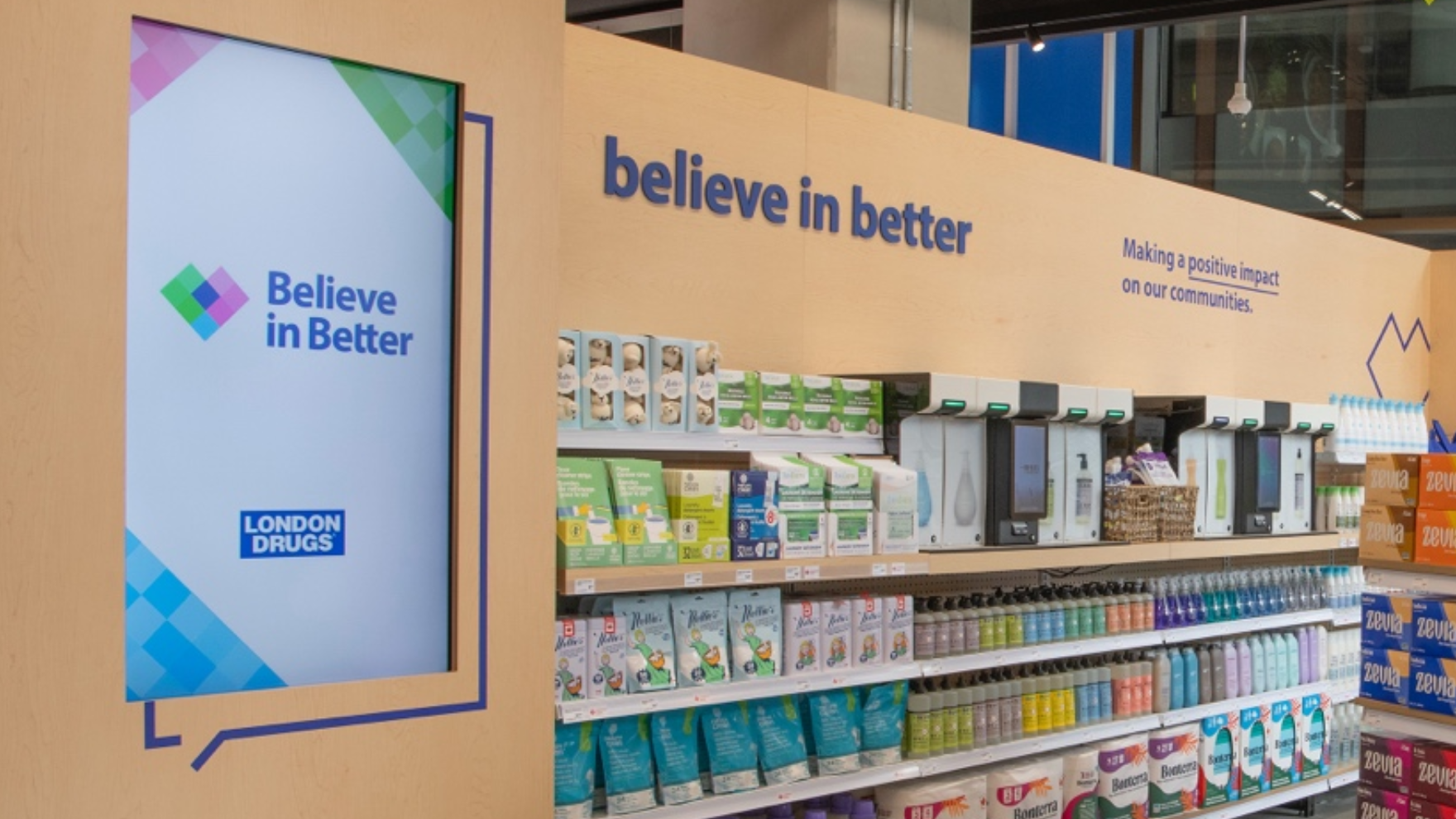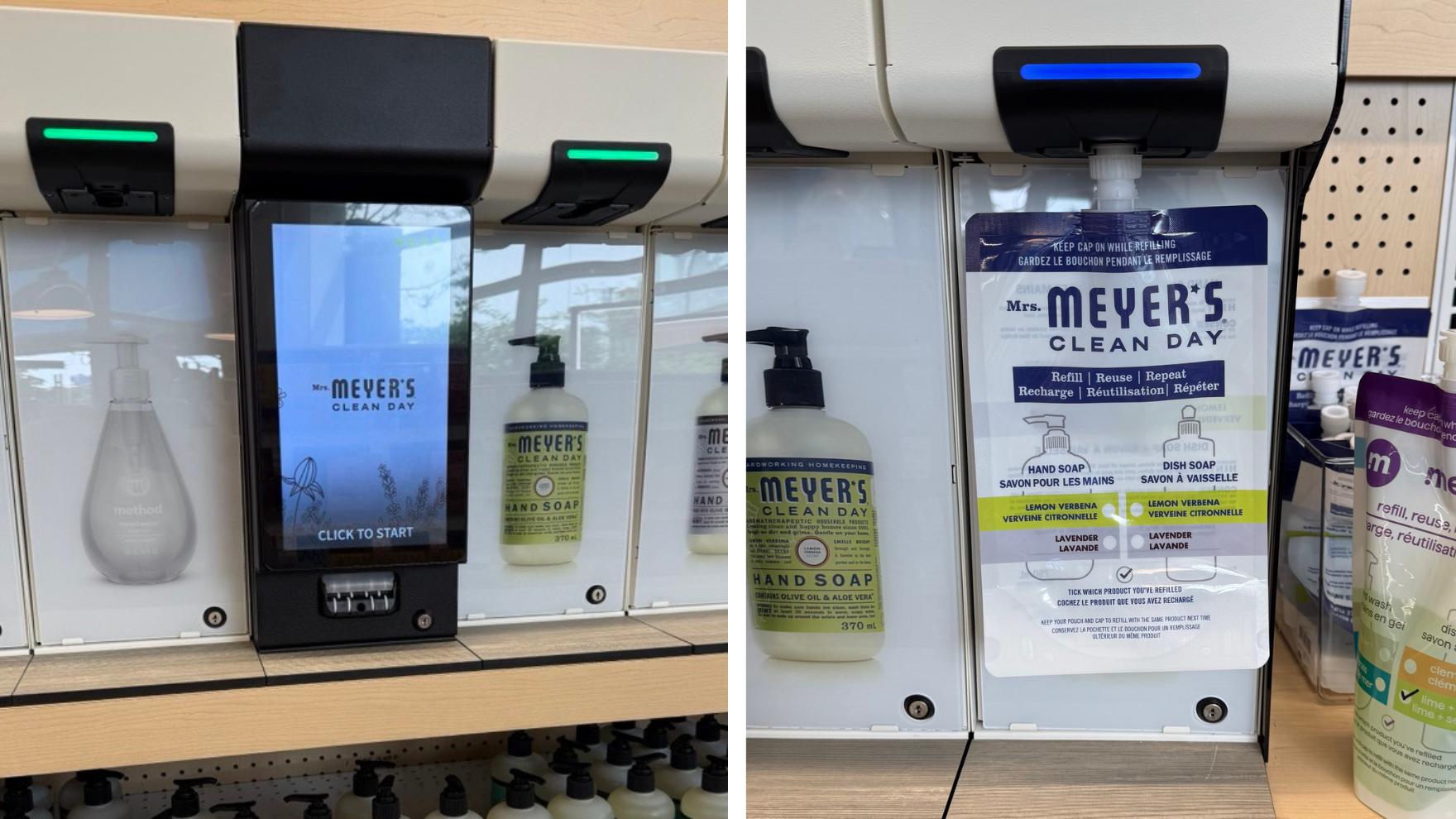Putting Refill on Your Shopping List
A new store refilling station is helping turn refilling into a habit, not a hassle.
We don’t usually think twice about the soap bottle under the sink. We use it, toss it and replace it. What often gets overlooked, however, is that the same bottle could be refilled, cutting down on waste without changing much about how we shop. It’s a small shift that could have a big impact.
Despite growing interest in refillable products, most people don’t make it a habit. One report found that while 85% of shoppers liked the idea of reuse, only 16% actually followed through with it. People forget containers, don’t want to deal with the cleanup, or find the process unfamiliar.
That gap between interest and action reveals the challenge: most refill systems weren’t built with real life in mind. After decades of designing products for single use, reuse now requires a redesign of everyday habits and of retail itself.
That’s the thinking behind a new in-store refill station launched by SC Johnson and London Drugs at The Amazing Brentwood in Burnaby, British Columbia.

Meeting People Where They Are
Located inside London Drugs’ first sustainability-focused concept store, the station allows shoppers to refill method® and Mrs. Meyer’s® soaps using durable 750ml pouches. Shoppers can refill their soap while picking up toothpaste or grabbing cold medicine- no special trip is required.
The station is designed to be quick, intuitive and clean. It shuts off automatically, minimizing spills, and doesn’t require help from store staff. The refill pouches are portable, easy to carry, and made to last through multiple uses.
Hand and dish soap are the kinds of household staples that people buy repeatedly, making them a good starting point for refill systems. Method and Mrs. Meyer’s already offer bulk refills and concentrates, so this pilot builds on existing infrastructure and consumer habits.
The refill station is part of London Drugs’ broader store redesign, which focuses on sustainability and wellness. Other features include a recycling drop-off station, a refreshed pharmacy layout, and a new beauty department focused on skin health and cleaner product options.
Together, these changes aim to make lower-waste choices more convenient for shoppers without requiring a complete overhaul of their shopping habits.

Unlocking Reuse’s Waste Reducing Potential
SC Johnson has been developing refill systems for years, particularly in Europe, where its Ecover brand has helped launch over 700 in-store refill stations. The company’s approach has always focused on meeting consumers where they are by designing options that fit into daily life and building partnerships that make it easier for consumers to reuse what they already have.
The environmental case for this kind of retail is strong. According to the Ellen MacArthur Foundation, expanding reuse could cut packaging-related emissions by more than two-thirds. Oceana estimates that replacing just 10% of single-use plastic with refillables in coastal countries could reduce plastic bottle pollution by 22%.
Unlike recycling, which happens after a product is used, refill systems keep packaging in the hands of the producer or retailer, where it’s more likely to be reused or properly recycled. It’s a practical step toward a circular system.
Looking Ahead
Refillable packaging isn’t a new idea, but it’s gaining fresh momentum. Nearly 7 in 10 consumers say they’re likely to try products in returnable packaging if available where they already shop. The challenge now is making those options common and easy to use.
Scaling up refill systems will take time. After 70 years of disposable design, it’s no surprise that reuse feels unfamiliar. However, rebuilding those habits and reshaping the retail experience around them is a necessary part of reducing plastic waste. Refill won’t solve everything, however, it’s an essential step toward a future where packaging ends up in the recycling stream rather than the waste stream.
